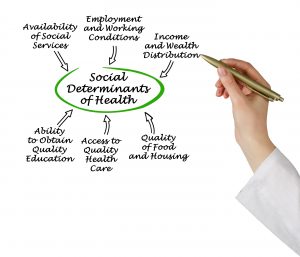Collecting and relaying health data information to healthcare decision makers in a way that is digestible and actionable is the key to successfully implementing an analytics-driven approach that can improve patient care outcomes. To do this, healthcare analytics professionals need to create health data visualizations that make sense of the data information by streamlining the dashboards used, making the process of collecting and analyzing data is easier.
Here are some best practices for creating dashboards and data visualizations in healthcare analytics that can lead to improved healthcare outcomes.
Creating Effective Dashboards
By definition, a dashboard is a data visualization tool that tracks, analyzes, and displays KPIs, metrics, and critical data points. Dashboards empower both technical and non-technical users to understand and leverage data to make more informed decisions. Effective analytics dashboards for stakeholders across varying levels and positions within the organization can make a world of difference in the commitment to quality data analytics.
Two important ways effective dashboards make a difference are the in the ability to visualize multiple data points at once and provide greater accessibility and accountability in the use of data information.
Visualize Multiple Data Points at Once
The first step to effective dashboard creation, according to an article from Health Catalyst, is a bottom-up approach in terms of organizational hierarchy. Underlying departmental dashboards from across an organization should feed into executive dashboards. This provides a “bird’s eye view” of the data from each of these platforms in one centralized location, with the ability to quickly understand what it means for decision making, whether that be for patient care or organizational efficiency.
Executives and team leaders need to understand how the dashboards feed into each other, the metrics and KPIs being examined, and how the teams can best satisfy those metrics. An effective dashboard should be intuitive and clearly provide this information. Executives and team leaders should be able to quickly scan data visualization dashboards, obtaining a high-level view of key data points.
Greater Accessibility and Accountability
Clearly defined roles should also be in place for ownership of key metrics. Establishing accountability and ownership of metrics regarding a specific data point, such as sepsis cases, helps executives work more closely with someone to address issues and take a more hands-on approach in managing those stakeholders.
A common problem in healthcare organizations is that these insights are gathered and examined by centralized analyst who conveys them to the executive team. This can cause a lack of ownership and comprehension of the processes and conditions that led to a problem. Questions go unanswered and insights go unnoticed or are never acted upon.
Having specific people managing underlying dashboards not only ensures that they are experts on the data and the processes by which it was collected and examined, but it also holds more promise for sustainability of executive dashboards. Those individuals will understand how to make their own dashboards plug into the executive dashboard in ways that fit a standardized framework, are easy to read and consistent.
Improved Health Data Visualizations
Data visualization makes it possible for people to understand large volumes of information that would otherwise just be lines of data in a black-and-white spreadsheet. Through effective dashboards, health data visualization can combine different data points in the care process and help teams understand what other units within a care facility are doing, their processes, and the data they collect and use to measure their own performance.
Good health data visualization helps healthcare teams and organizations to:
Simplify Data Information
Visualizations don’t have to be complex. A simple tab chart that combines financial and administrative data with departmental records can tell an analyst a lot about things like commonality of a condition, the cost related to treatment and the average length of stay per patient with that condition. This provides answers to questions about how treatments are administered and can shed light on how those treatments impact hospital finances and the availability of beds within the facility.
Increase Collaboration
Improved visualization also reduces cognitive burden and leads to shared clinical processes and an increase in engagement from teams that ask “What if?” questions rather than following formulas. It can lead to improved relationships between team leaders through the identification of common goals and inspire new solutions from teams focused on collaboration.
Avoid Data Misinterpretation
When done right, health data visualizations also help teams avoid data misinterpretation, according to an article from Health IT Analytics.
“Data that applies easily to one segment of the population might not be applicable at all to another. It could be misleading,” Strategic Analytics Manager at Deloitte Peter Viechnicki said in the article. “It could be filled with caveats. In healthcare, we see a lot of things that look like trends but that might just be correlations without provable causation…For developers, the trick is how to represent those visually without implying something that you don’t mean to convey.”
As executives look to immerse themselves in more complex data and patient care teams utilize their access to clinical and financial data to streamline care, effective health data visualization can help improve communication and understanding. Effective dashboards can take data sources and visualization beyond EHRs, which as of now do not create an intuitive or actionable way to interpret the data they hold for the user.




